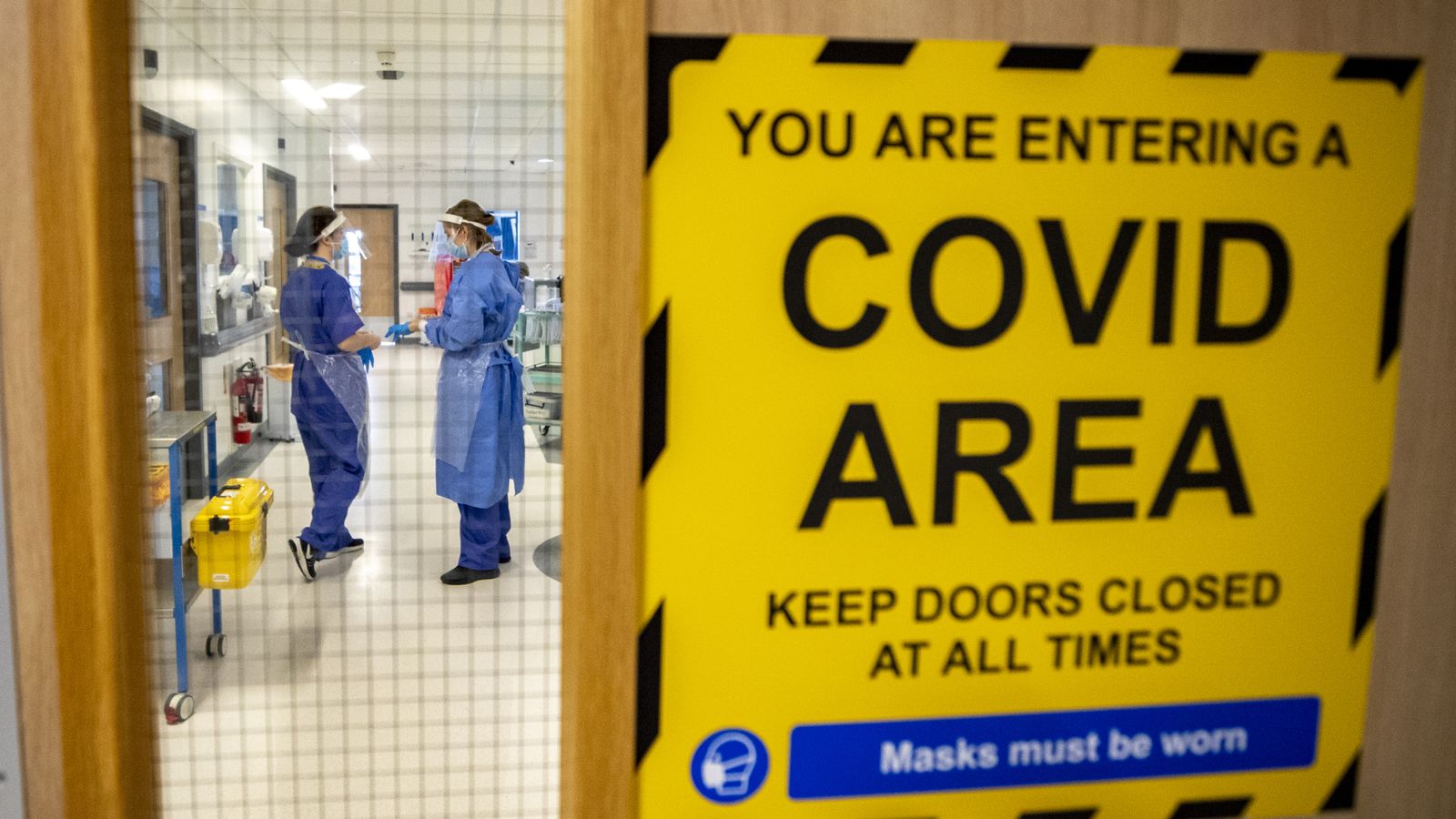Scientists predicted at least another 30,000 coronavirus deaths in the UK by June next year “under the most optimistic” modelled scenarios for lifting lockdown.
Under some of the models, such as with a rapid relaxation of rules, further COVID-19 death figures would have reached well over 100,000.
Ahead of the prime minister announcing his “roadmap” to easing restrictions in England, the government’s scientific advisers considered a document produced by the Imperial College COVID-19 Response Team on the potential effect on infections and fatalities.
Please use Chrome browser for a more accessible video player
Follow live coverage on Sky News as the PM addresses the Commons and leads a Downing Street news conference
The Imperial College team – including Professor Neil Ferguson – warned that even a “gradual” lifting of restrictions could result in a “substantial additional number of deaths”, with an estimated 58,200 fatalities by June 2022.
Meanwhile, returning to Tier 1-like restrictions on 27 April ahead of the full lifting of restrictions on 16 July would have led to an additional 55,000 deaths, the scientists said in a document released on Monday.
Here are some of the scenarios the Imperial College team set out, which mention restrictions under the tiered-system imposed last year:
• “Very fast” lifting of restrictions
Under this scenario, the scientists considered all schools returning on 8 March, with tier 3 and tier 2-like restrictions after 29 March, and the full lifting of restrictions from 26 April.
It said this form of easing lockdown would result in an estimated 91,300 deaths from 12 February 2021 to 30 June 2022 (with a credible interval of 52,500 deaths to 146,400).
• “Gradual” lifting of restrictions
The Imperial College considered primary schools returning on 8 March, with all schools on 5 April. This would be followed by tier 3-like restrictions from 3 May, tier 2 restrictions from 7 June and tier 1 from 5 July, before all restrictions were lifted from 2 August.
It said under this scenario, 58,200 COVID deaths were predicted (with a credible interval of 31,000 deaths to 95,300)
• “New” scenario for lifting restrictions
Under this scenario, all schools along with critical higher education and further education would return on 8 March, along with some children’s activities.
Tier 3-like restrictions would be imposed from 29 March, with one guest per day per household allowed indoor and outdoor hospitality returning.
Tier 1-like restrictions would be imposed on 27 April, with all restrictions lifted on 16 July.
Under this scenario, the scientists predicted a further 55,000 deaths (with a credible interval of 33,200 deaths to 81,200).
In reality, the government has announced all schools in England will reopen on 8 March, with some outdoor restrictions lifted by 29 March, and the next step will be to reopen beer gardens and hairdressers in England from 12 April at the earliest.
By 17 May, people in England could be allowed to hug others outside their household bubble again under the government’s plans.
The Imperial College team warned that “vaccination alone will not be sufficient to keep the epidemic under control” due to “eligibility and vaccine hesitancy”.
“Non-pharmaceutical interventions (NPIs) must be lifted slowly and cautiously to minimise the number of deaths and prevent high hospital occupancy, with some baseline NPIs remaining in place (and adhered to) throughout 2021 and beyond,” it said.
“Relaxing too quickly… will result in peak hospital occupancy considerably higher than the current wave and substantial additional deaths.
“This holds regardless of vaccine efficacy, roll out, adherence to baseline NPIs, and impact of seasonality.”
The Imperial College work was considered by the Scientific Pandemic Influenza Group on Modelling (SPI-M) in a document dated 17 February, along with modelling by the University of Warwick.
The SPI-M paper said: “Under the most optimistic set of assumptions modelled, and assuming that baseline measures once restrictions are lifted significantly reduce transmission compared to a return to pre-COVID-19 behaviours, both groups estimate that at least a further 30,000 COVID-19 deaths would occur under the new scenarios.”
The document says keeping some baseline measures once restrictions are lifted “is almost certain to save many lives” and could include voluntary mask-wearing, avoiding crowds and an effective test and trace system.
A further document released by the Scientific Advisory Group for Emergencies (SAGE), from 11 February, warned “there is the potential for a resurgence to result in a very large number of infections (third wave) if restrictions are lifted early or rapidly”.
This would lead to “large numbers of hospitalisations and deaths unless vaccine coverage is very high (high confidence),” SAGE said.
“If all restrictions were to be lifted by the start of May (over a period of around 2 months, starting in March), hospital occupancy would be highly likely to reach levels higher than at the peak in January 2021, even under optimistic assumptions around vaccine rollout,” the document adds.
SPI-M says its “consensus view remains that the opening of primary and secondary schools is likely to increase effective R by a factor of 1.1 to 1.5 (10% to 50%)”, according to SAGE.
This is partly because opening schools affects the activities and behaviours of parents and other adults as well as children, it adds.
Since the start of the pandemic, more than 120,000 people have died in the UK within 28 days of a positive COVID test.






















